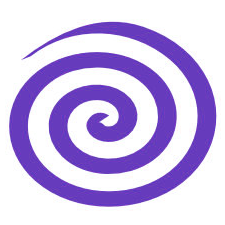Training in Erickson Hypnosis and Therapy, By Eric Greenleaf PhD
Hypnosis is a naturally occurring imaginative state which develops in mutual interactions of therapist and client. The Erickson-influenced approaches emphasize the individuality of treatment planning in order to utilize both the therapists’ own human skills and the clients’ own resources to provide effective leverage against problem areas in life.
The notion of the Unconscious Mind is common to many older psychotherapies and to the most modern neuroscience-based ones as well. Psychotherapies using like forms of visual imagination, reconstructive mental practices and interpersonal effect, are all consonant with therapies using hypnotic approaches in that they employ focused and dissociated forms of attention, unconscious resource and change, and a solid base in neuroscience, attachment theory, mental practice research and many other forms of therapeutic intervention. These are all ethical and effective therapeutic modalities.
The 50 year span of work by Milton H. Erickson MD influenced important therapists including Haley, Madanes, Feldenkrais, Watzlawick, the family therapists, brief therapists, positive psychologists, and many others through their founders or by direct attempts to model Ericksonian approaches. Hypnosis has its own ancient traditions, but, as practiced in psychotherapy by Erickson-influenced therapists, licensed and trained in their professions, it is a companion of modern approaches ranging from EMDR, Brainspotting and NLP to many traditional psychodynamic therapies. It is mainstream, and engages the history and approaches of various psychotherapies throughout its span.
Jay Haley told the amusing story of his early years utilizing hypnosis in therapy. He said that he often had to wake the patient from a spontaneous trance in order to “do an hypnotic induction” with them. The interpersonal nature of trance, as opposed to the mechanical view of hypnosis as a procedure, was noted as long ago as Freud’s comments in his Autobiographical Study [1935], where he said:
Transference … decides the success of all medical influence, and in fact delineates the whole of each person’s relations to his human environment. We can easily recognize it as the same dynamic factor that the hypnotists have named ‘suggestibility’ which is the agent of hypnotic rapport and whose incalculable behavior led to such difficulties with the cathartic method. When there is no inclination to a transference of emotion…then there is also no possibility of influencing the patient by psychological means.
What, then, is needed to both learn hypnotic language and interactions, and to so integrate these practices into one’s own individual ways of doing therapy that they are natural and seamless for the practitioner – not just another awkward method? The teaching style of Betty Alice Erickson, MFT, LPC, Milton Erickson’s daughter and demonstration subject, is based on demonstration, didactic discussion, live practice, case study and supervision. Whether taught directly or accompanied by translation, they emphasize the emotional connection with the patient, what is sometimes called “hypnotic rapport.” Her next intensive workshop, HOW TO DO HYPNOSIS AND THERAPY THE ERICKSON WAY [ www.miltonherickson.com ] , will be taught with Eric Greenleaf PhD and John Dyckman PhD, both experienced teachers and practitioners, over a three day period, Oct. 23-25, 2015 in San Rafael CA near San Francisco. Hypnotic therapy with individuals, couples, families and groups will be demonstrated, discussed and practiced, and approaches to cases and rules of thumb for practice, as well as the uses of language in hypnotic storytelling will be emphasized.
Live practice with other therapists gives the experiential feedback, tempered by one’s own ways of treating and being the patient, that allows rapid acquisition of skills in an absorbing interpersonal environment.
